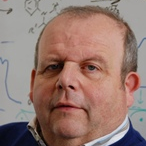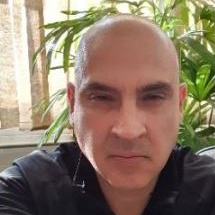Synthesis of Potential Bioactives
A special issue of Molecules (ISSN 1420-3049). This special issue belongs to the section "Bioorganic Chemistry".
Deadline for manuscript submissions: 30 June 2024 | Viewed by 1434
Special Issue Editors
Interests: bioorganic chemistry; natural product chemistry; multi-component diversification of bioactives
Interests: synthetic chemistry; natural product chemistry; medicinal chemistry; bioorganic chemistry
Special Issues, Collections and Topics in MDPI journals
Special Issue Information
Dear Colleagues,
In the past two decades, the emergence of new pathogenic strains of viruses including SARS-CoV-2 along with drug resistance to numerous drugs has presented challenges that require urgent response. Targeted therapy of cancer is another unresolved problem. Finding a new compound via synthetic methodologies, enzymatic synthesis or biotransformation is an important step in the development of new drugs. To address these important issues related to drug discovery, numerous intriguing synthetic methodologies need to be established in order to enable the efficient assembly of new molecules and studying structure–activity relationships. This Special Issue welcomes original articles, communications and reviews dealing with the synthesis of bioactive compounds and synthesis (including enzymatic) of natural product derivatives. In addition, this issue also welcome articles related to investigation of mechanisms of bioactive compounds for the treatment of cancer, diabetes, infectious diseases, microbial diseases, cardiovascular diseases and other human diseases.
Prof. Dr. Bernhard Westermann
Prof. Dr. Hidayat Hussain
Dr. Oscar Endrigo Dorneles Rodrigues
Guest Editors
Manuscript Submission Information
Manuscripts should be submitted online at www.mdpi.com by registering and logging in to this website. Once you are registered, click here to go to the submission form. Manuscripts can be submitted until the deadline. All submissions that pass pre-check are peer-reviewed. Accepted papers will be published continuously in the journal (as soon as accepted) and will be listed together on the special issue website. Research articles, review articles as well as short communications are invited. For planned papers, a title and short abstract (about 100 words) can be sent to the Editorial Office for announcement on this website.
Submitted manuscripts should not have been published previously, nor be under consideration for publication elsewhere (except conference proceedings papers). All manuscripts are thoroughly refereed through a single-blind peer-review process. A guide for authors and other relevant information for submission of manuscripts is available on the Instructions for Authors page. Molecules is an international peer-reviewed open access semimonthly journal published by MDPI.
Please visit the Instructions for Authors page before submitting a manuscript. The Article Processing Charge (APC) for publication in this open access journal is 2700 CHF (Swiss Francs). Submitted papers should be well formatted and use good English. Authors may use MDPI's English editing service prior to publication or during author revisions.
Keywords
- drug discovery
- natural product derivatives
- bioactive synthetic compounds
- enzymatic synthesis
- cancer
- infectious diseases
- microbial diseases
- diabetes
- cardiovascular diseases
- human health
- human diseases
- computational methods
- in vitro studies
- in vivo studies
- mechanism of action
- target identification








